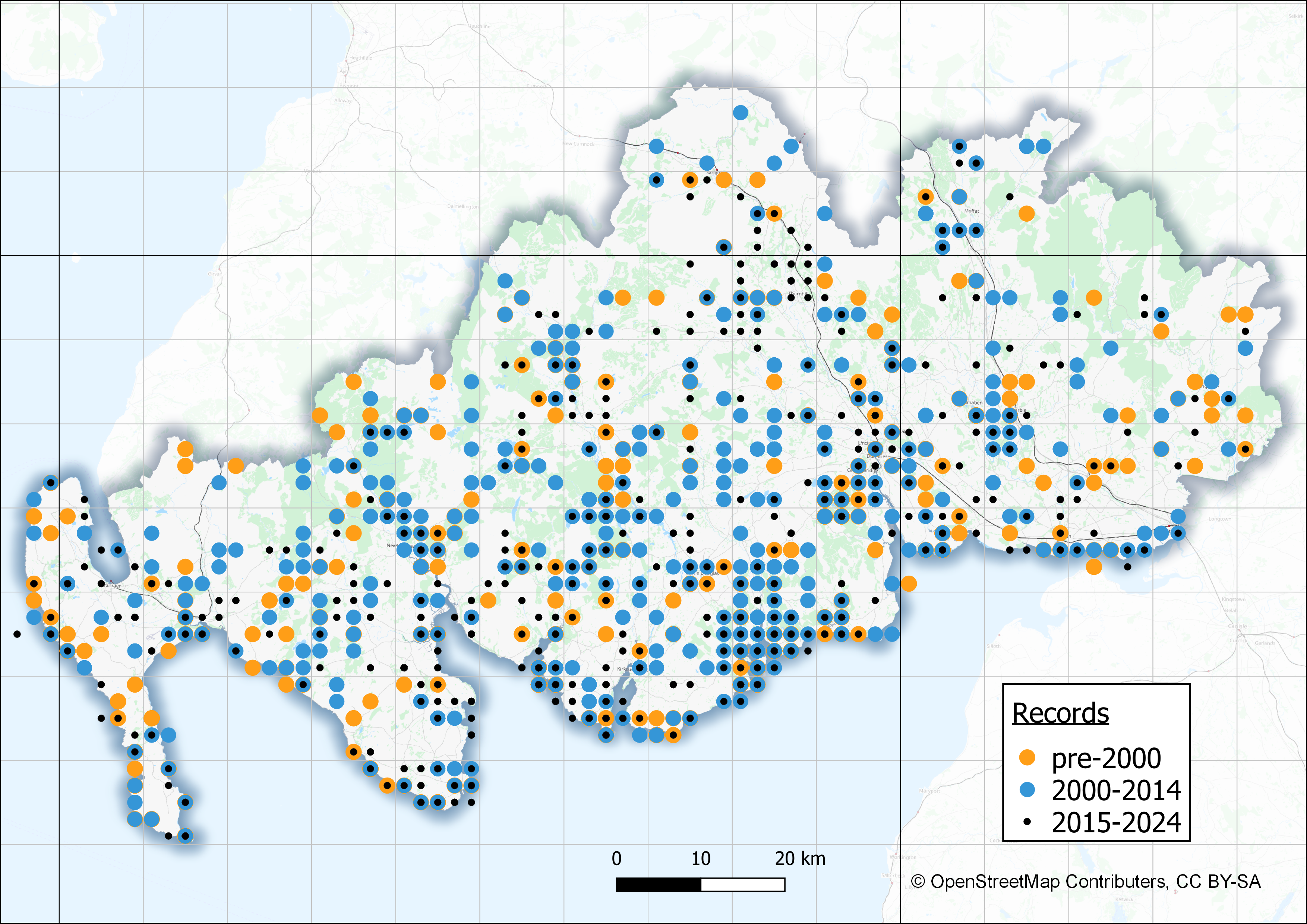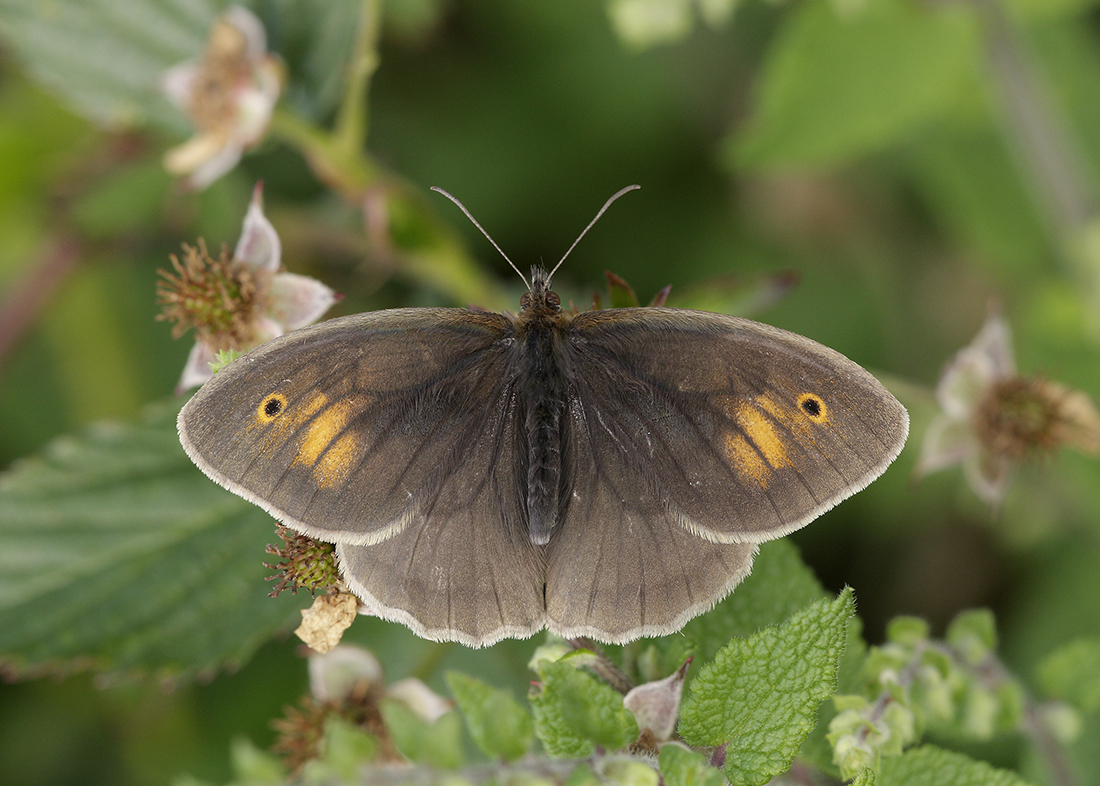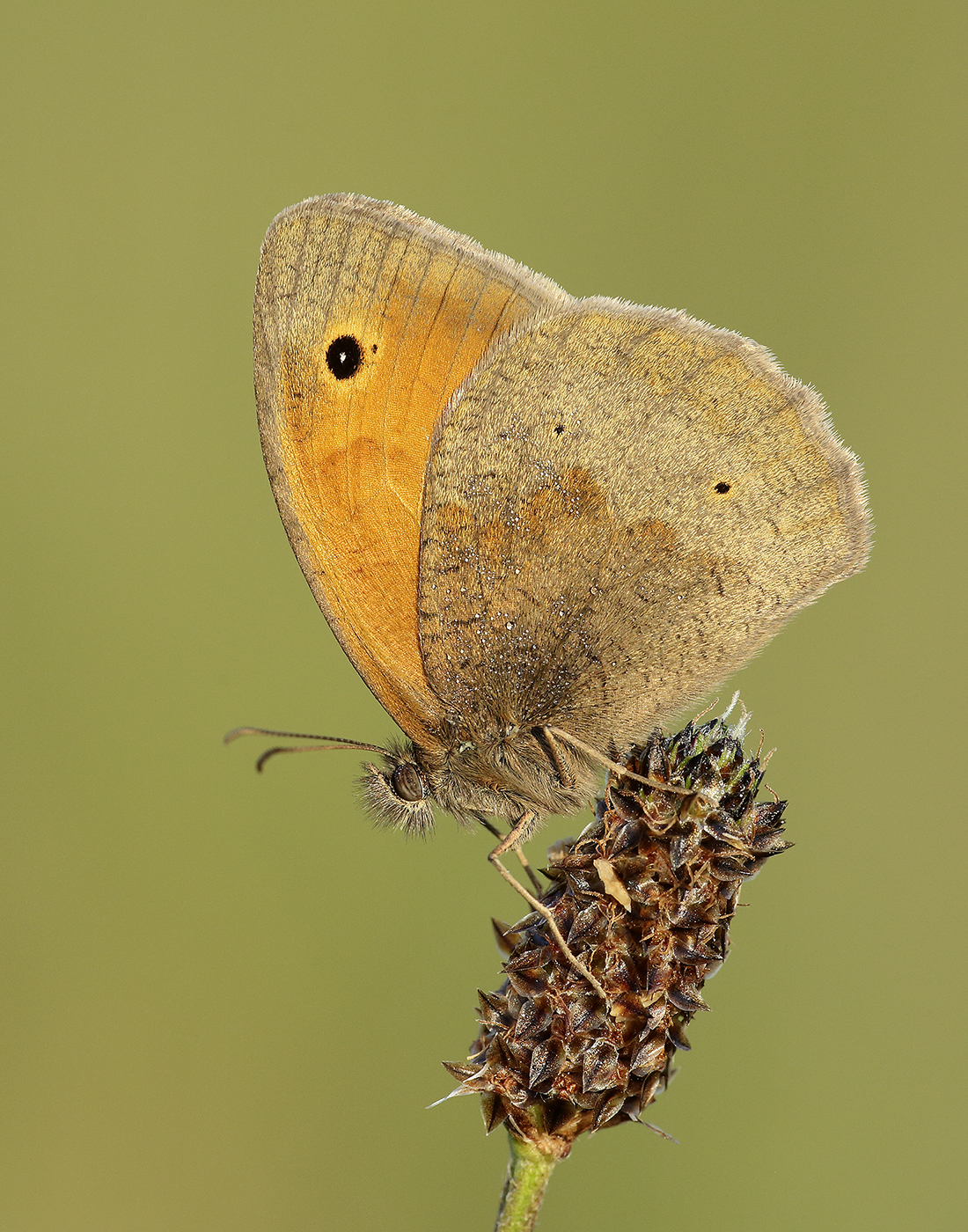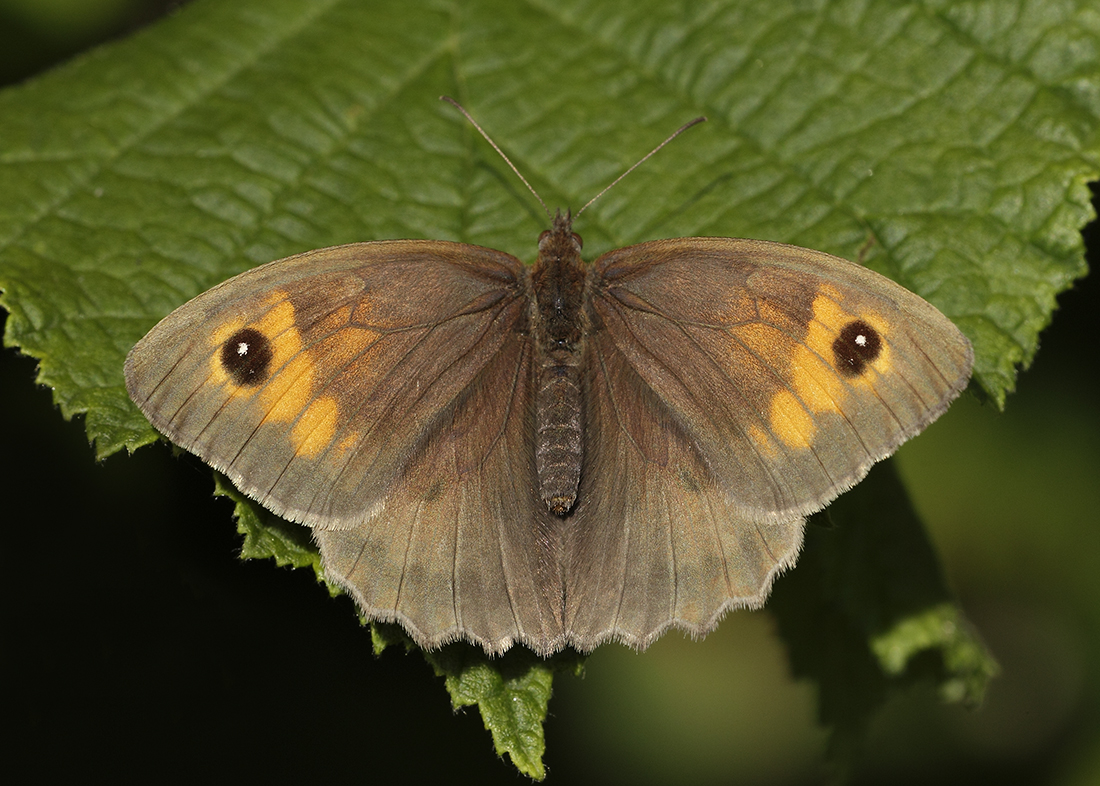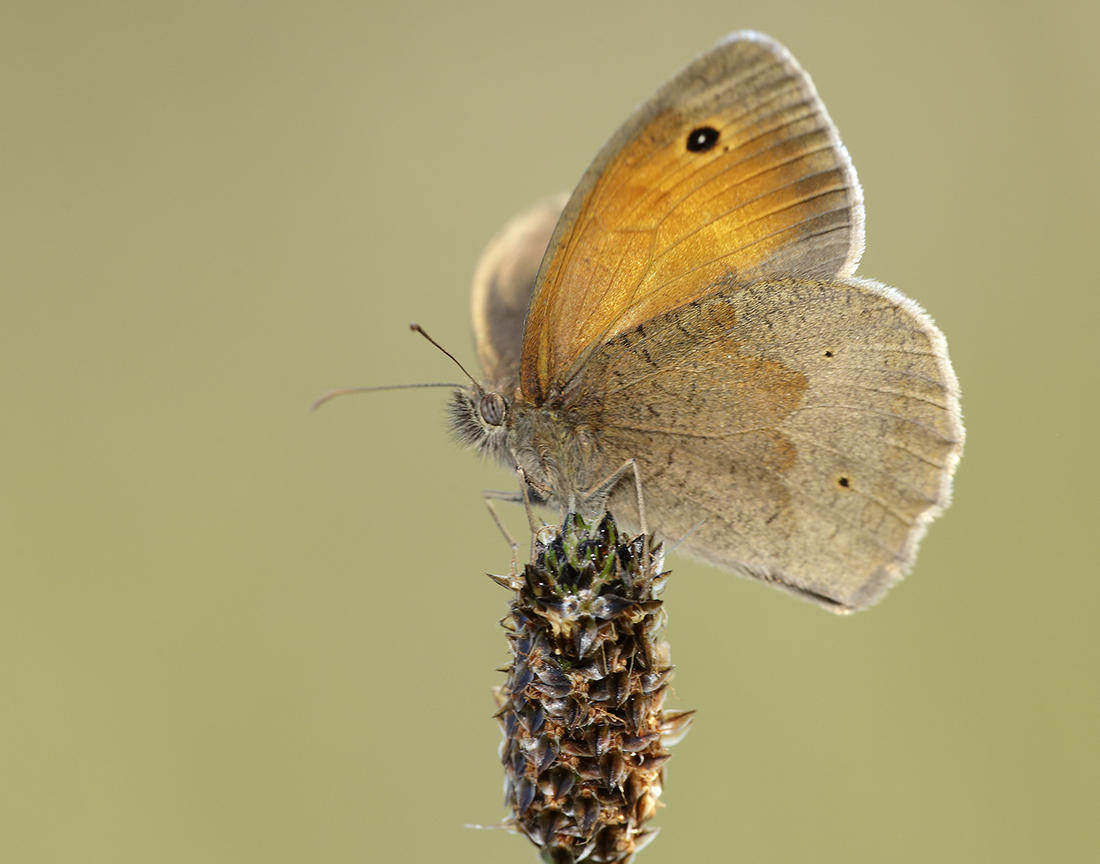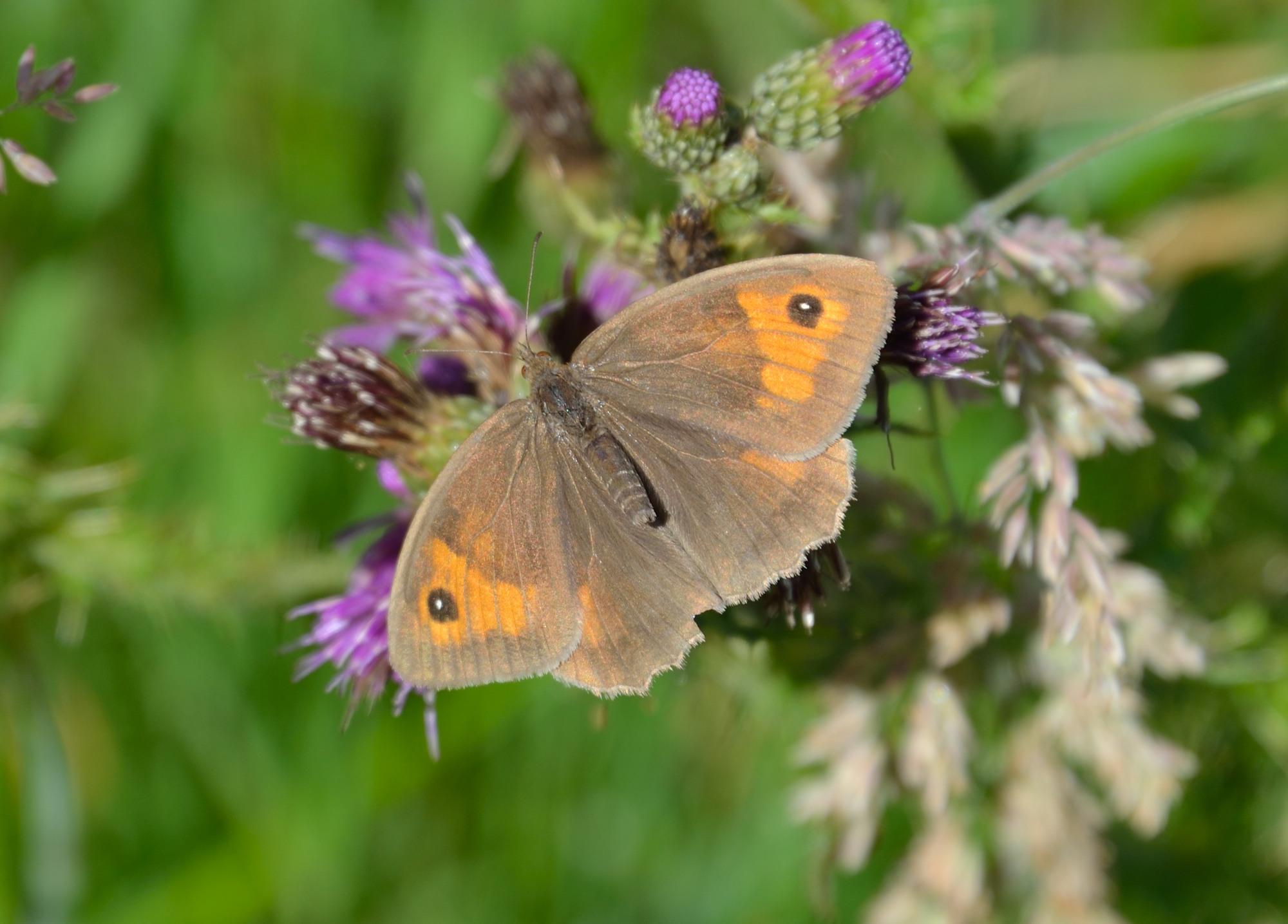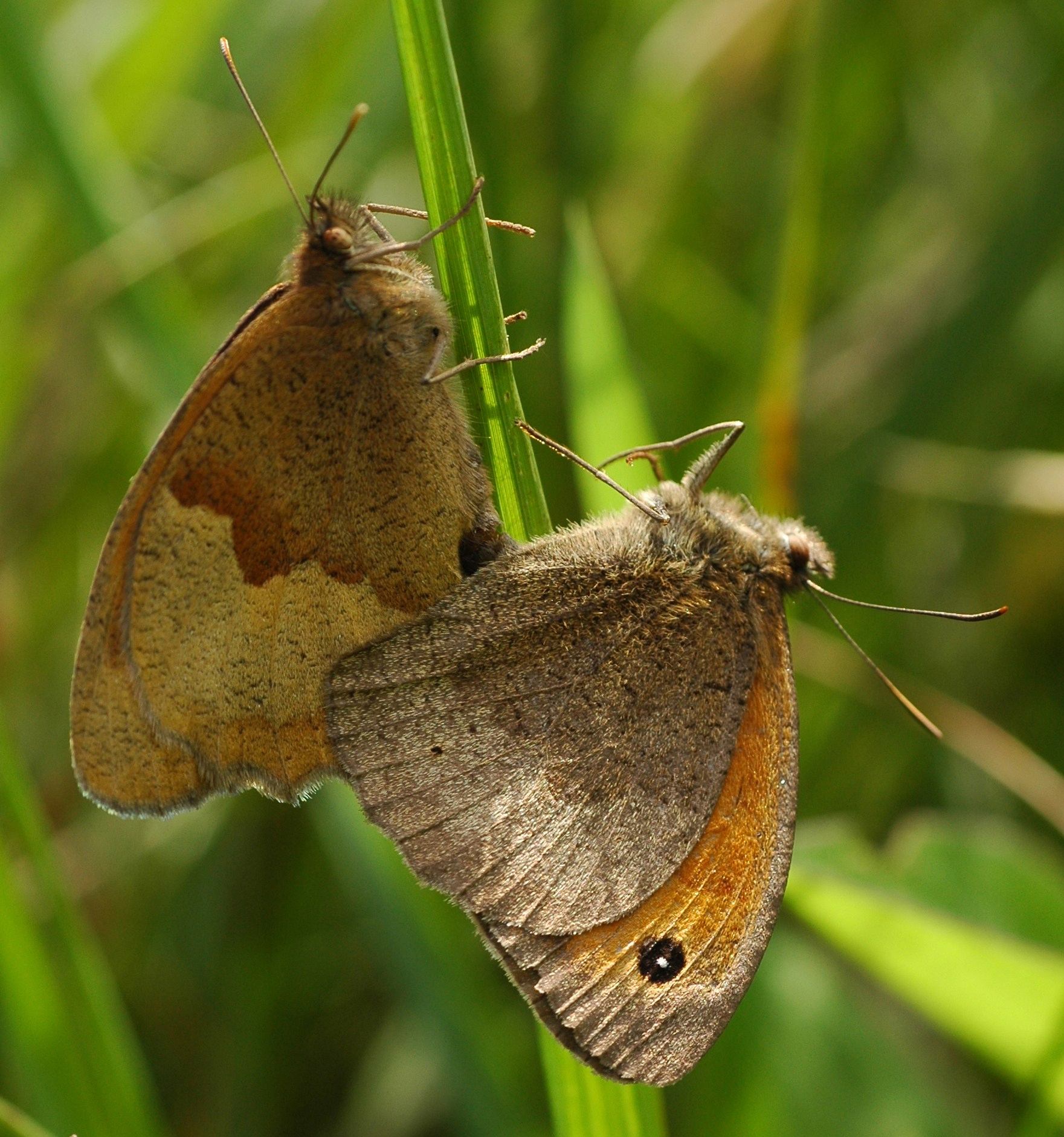The Meadow Brown seems to be fairly stable in terms of distribution and abundance and it remains one of our commonest butterflies. As far as we can tell, the Meadow Brown has not exhibited the range contractions and expansions over the last 150 years shown by species such as the Speckled Wood, Ringlet or Wall.
Identification
Male Meadow Browns are darker than the females, the dark sex brand of the former usually being quite obvious. The amount of orange on both is variable, and both sexes have scalloped hind wings.
As the season progresses the adults become worn, losing their scales and sometimes appearing quite pale. It is then that a Meadow Brown can be tricky to distinguish from a pale, worn Scotch Argus or Ringlet, so some care is needed when recording late in the season.
Life cycle & flight period
One generation a year, the adults can be on the wing from late May until early September, but it is at its peak in July. Overwinters as a caterpillar.
Larval foodplant
Fine-leaved grasses such as fescues initially but later feeds on meadow-grasses and Cock’s-foot.
Habitats
Meadow Brown habitats include tall grasslands and sunny woodland glades and most places with tall, dense grassland will hold a colony, although in intensively farmed areas it is restricted to roadside verges and field edges. Meadow Browns are scarce in the uplands, preferring, as their name indicates, lush herb-rich grasslands, and are mostly found below 200m. Meadow Browns visit a wide range of flowers but they seem to favour knapweeds and thistles.

